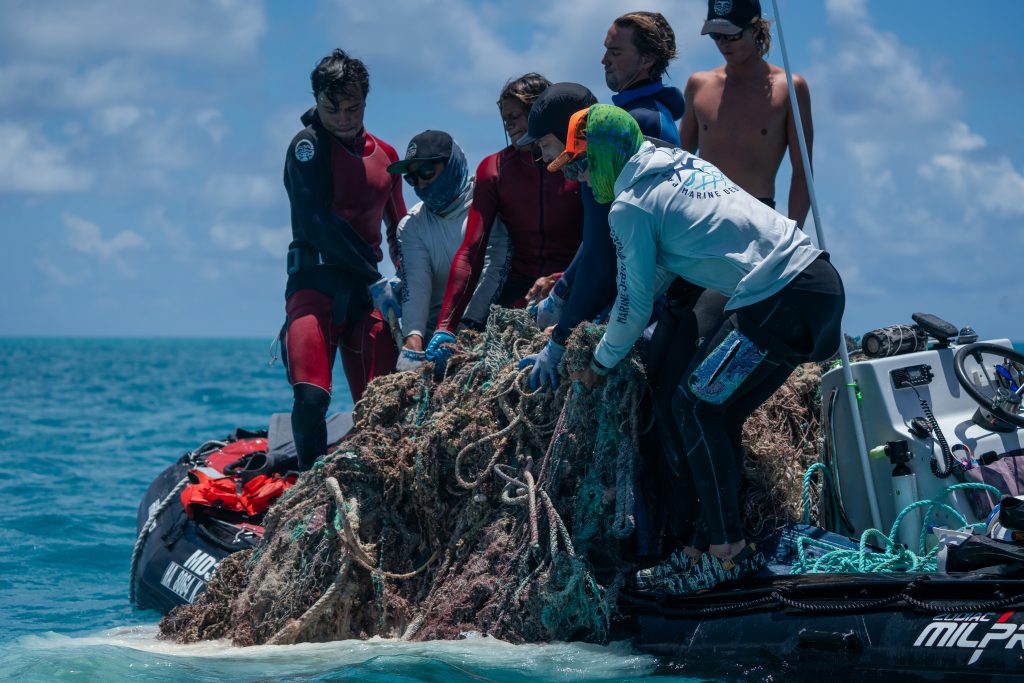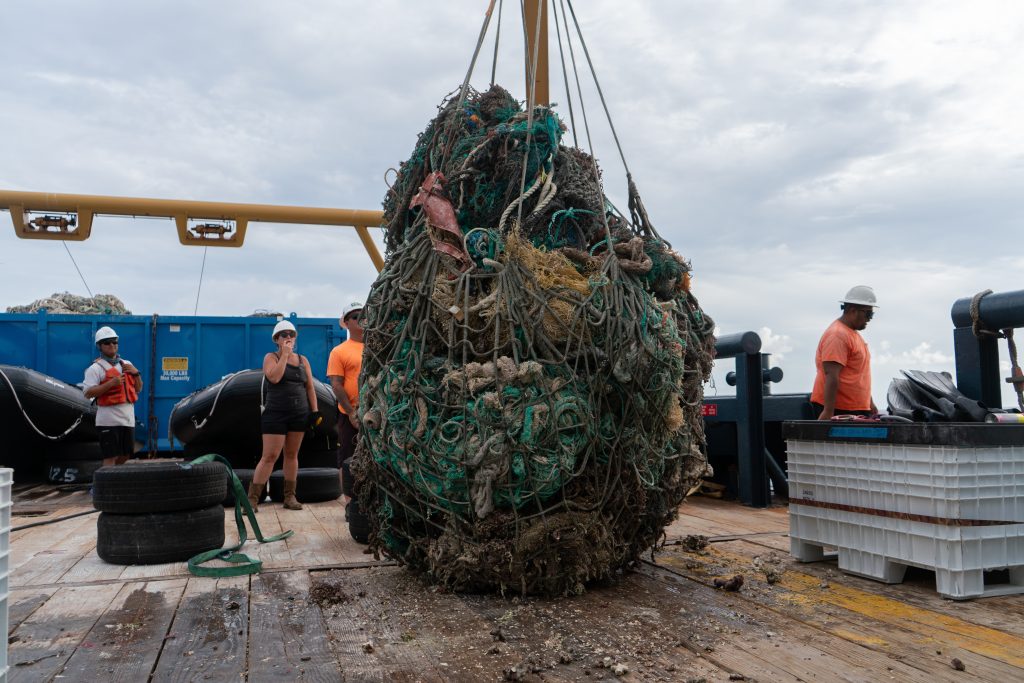86,100 pounds of marine debris removed from Papahānaumokuākea

A team from the Papahānaumokuākea Marine Debris Project, a Hawaiʻi-based nonprofit organization, returned to Honolulu on Wednesday, with 86,100 pounds of marine debris removed from shallow coral reefs and shorelines of the islands and atolls within Papahānaumokuākea Marine National Monument.
Of the 86,100 pounds of marine debris removed:
- 57,240 pounds removed from Kamokuokamohoaliʻi (Maro Reef)
- All 57,240 pounds – ghost nets removed from the coral reefs
- 16,820 pounds removed from Kamole (Laysan Island)
- 6,720 pounds – ghost nets removed from the shorelines
- 10,100 pounds – plastic and other debris removed from the shorelines
- 12,040 pounds removed from Kapou (Lisianski Island)
- 5,370 pounds – ghost nets removed from the shorelines
- 6,670 pounds – plastic and other debris removed from the shorelines

Using their team of highly-skilled freedivers and small boat operators, Papahānaumokuākea Marine Debris Project conducted 20 days of cleanups at Kamokuokamohoaliʻi (Maro Reef), Kamole (Laysan Island), and Kapou (Lisianski Island), focusing on carefully removing ghost nets from the shallow coral reef environments.
These ghost nets pose entanglement threats to protected endemic wildlife and suffocating negative impacts to the living coral reef habitats, according to program leaders. The team also disentangled and saved a Hawaiian green sea turtle from a net, as well as several protected seabirds.
“If PMDP isn’t there to clean up Papahānaumokuākea, no one is”, said Papahānaumokuākea Marine Debris Project Executive Director James Morioka. “We happened to be in the right place at the right time to save that turtle. You can only imagine how many more lost animals there would be if PMDP wasn’t preemptively cleaning up these reefs”.
The return of the 16-person team aboard the 185-ft ship M/V Imua, marks the completion of their first 30-day large-scale cleanup mission to the Papahānaumokuākea Marine National Monument in 2023. A second mission is scheduled for Aug. 26 to Sept. 22, 2023.
Since 2020, Papahānaumokuākea Marine Debris Project has removed a cumulative 589,847 pounds of debris from Papahānaumokuākea. Interestingly, over the last two years, the PMDP team has removed over 143,345 pounds of ghost nets from just one single coral reef system: Kamokuokamohoaliʻi (Maro Reef).
“This season, 57,000 pounds of ghost nets were removed from a reef area at Kamokuokamohoaliʻi just slightly larger than that of Ala Moana Beach”, said James Morioka. “It feels good to be able to remove these nets and prevent entanglements to wildlife and damage to the healthy coral reefs, but at the same time it’s heartbreaking to see the continual influx of marine debris in one of the most pristine, protected places in the world. We need to do better globally to prevent these nets from entering the oceans, and it all starts with the decisions we make at home in our daily lives”.
“Nearly 30,000 pounds of marine debris were removed from 10 miles of shoreline across Kamole (Laysan Island) and Kapou (Lisianski Island), an area equivalent to Oʻahu’s north shore,” Papahānaumokuākea Marine Debris Project Team Lead Andy Sullivan-Haskins said. “Removing hard plastics and other marine debris from the shorelines is critically important for protecting wildlife, as these items are often transient and move around during large storm events. These transient items can destroy eggs and important nesting habitat for threatened and endangered species (like the black-footed albatross and Laysan finch), smother native vegetation, and create breeding habitat for parasites like avian ticks. If these plastics are not removed, they break up into smaller pieces and are washed or blown out to sea where they are often returned to the islands by birds who mistake them for food, and are subsequently fed to their chicks. Much like ghost nets that continue to ghost fish long after they have been discarded, hard plastics have the ability to kill wildlife for as long as they persist in the ecosystem”.
Thanks to the “Nets to Energy” partnership with Schnitzer Steel Corporation and Covanta Energy, a majority of the debris will be incinerated to generate electricity for powering hundreds of Oʻahu homes. However, before incineration, recyclable plastics will be set aside for PMDP’s local student-led ocean plastics recycling project.

Leaders with the Papahānaumokuākea Marine Debris Project extended thanks to major funding partners for making this work possible including:
- The National Fish and Wildlife Foundation with support from:
- Marc and Lynne Benioff
- NOAA Office of National Marine Sanctuaries, NOAA Marine Debris Program (MDP). NOAA support includes funding from the 2022 Bipartisan Infrastructure Law.
- McPike-Zima Foundation, the Bruce G. Geary Foundation, and the Hawaiʻi Community Foundation
- Numerous community donors.



















